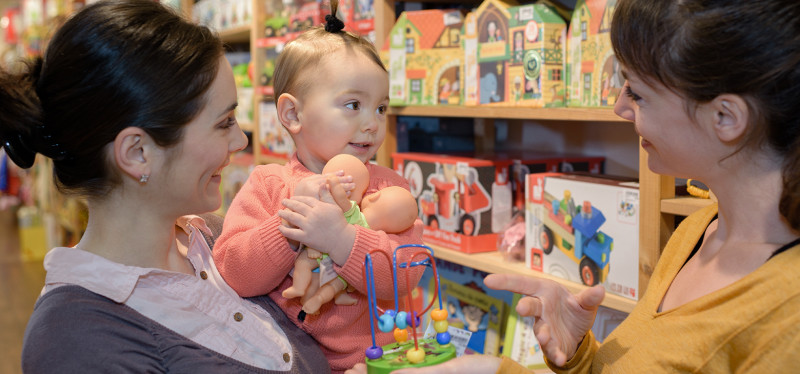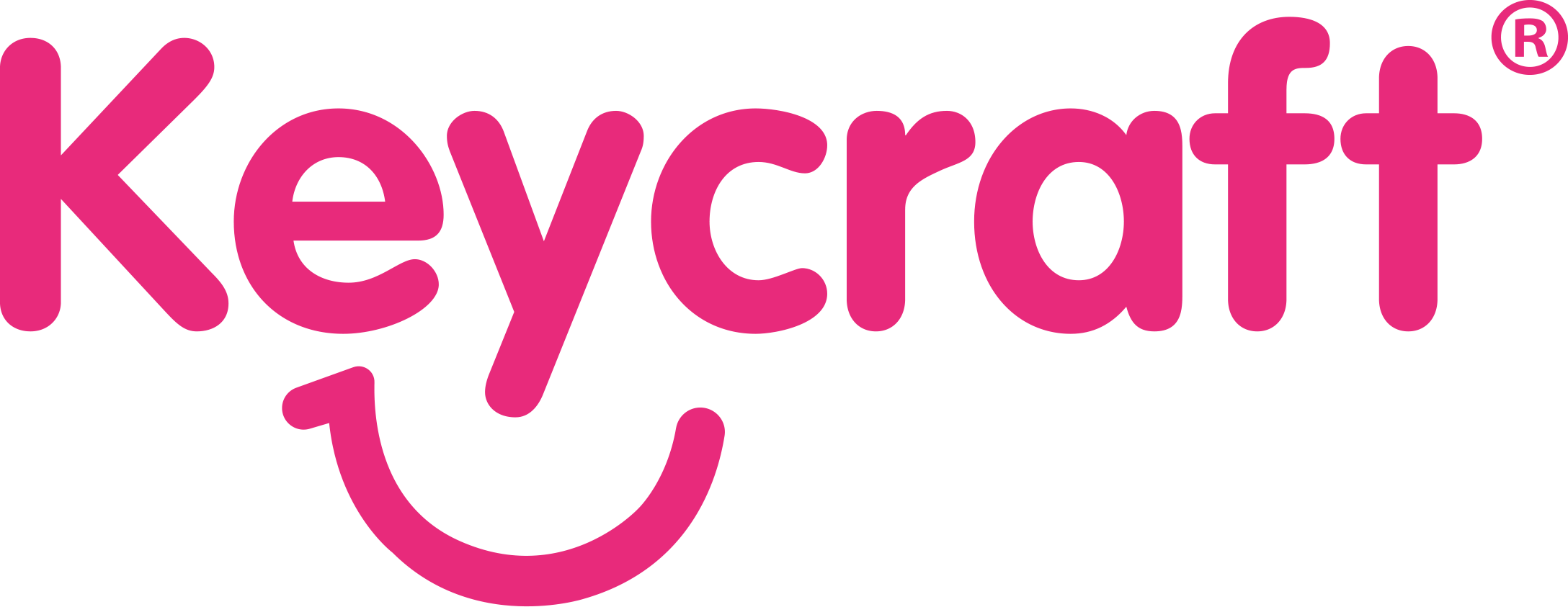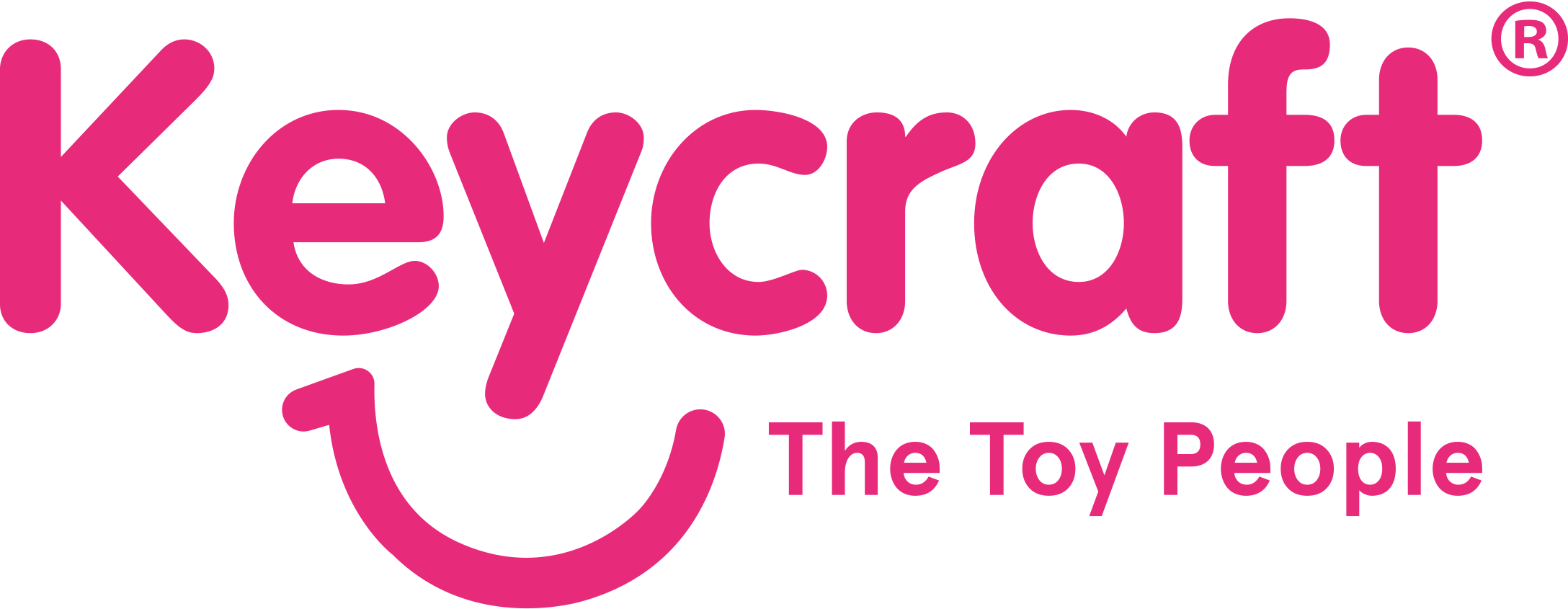How to build relationships with your retail customers
Learn how successful retail brands build relationships with customers to increase their lifetime value.

Did you know that it’s 6x more expensive to attract a new customer than it is to retain an existing one? And that the probability of selling to an existing customer is up to 14x higher than for a new customer?
If your existing customers have a positive experience, they will develop trust in your brand and be likely to spend more with you next time. That’s why increasing customer retention rates by just 5% can increases profits by 25% to 95%!
When it comes to customer retention, every sustainable business needs a strategy in place. Providing a great customer experience is a must. But beyond that, how are you maintaining contact with customers? Do you have a CRM database where you are collecting customer information? And what communication channels have you put in place for customers to opt into receiving relevant information from you?
Let's take a look at how leading retail brands use relationship marketing to increase customer loyalty and lifetime value.
Capture customer data automatically
Collecting customer data allows you to see who your customers are, collect relevant information about them, and most importantly, stay in touch. With a CRM database in place, there are multiple approaches you could use to collect customer data. The easier this process is for customers, the more data you will gather!
There are 2 top ways to automate customer data capture. Both of these approaches work best when you can set up an API integration between your CRM database and your website - or your online form tool, if it’s separate from your website. An API integration means that data will automatically be sent to and saved in your CRM database. Many modern CRM databases offer a number of pre-built API integrations. If you don’t have a website developer, your CRM customer support should hopefully help you get set up.
Leading CRM database tools like Hubspot provide website and form integrations, among many other potential software integrations. If you haven’t already purchased a CRM database, investigate what kind of integrations are available before you commit. These integrations are what allow automated marketing functionality, like sending automatic emails to welcome new customers after they sign up.
Here are the 2 most common ways to automate your customers’ data capture.
1. QR codes for in-store data collection
QR codes are easy to use, with free QR code generators available online. There are 5 steps for using QR codes:
Decide on an incentive for customers to ‘sign up’ using your QR code - consider a welcome discount, which is emailed as soon as the customer shares their data.
Create a form to capture customer data - don’t ask for more than 5 pieces of information.
Create a QR code that shares the URL of the form.
Integrate the form with your CRM database so the data is stored automatically.
Prominently display the QR code along with the promotional messaging, like at the checkout area where people queue to pay.
See instructions for how a small business could use free Google forms. Or try specialized online form tools like SurveyMonkey or Jotform, which provide CRM database integrations.
To deliver a reward as soon as a customer shares their data, you can use an automated marketing CRM tool like Hubspot, which will send pre-built emails when a specific trigger is created.
Once a customer has shared their basic contact information with you, you can begin the process of building a relationship and capturing more insightful data over time.
2. Social logins for online data collection
Make it easier for customers to share their data with you by setting up social login functionality. Whenever there is an online form asking for personal information, customers will be able to save time by automatically sharing their data from a social or Google account.
This works when customers are creating online accounts on your website (if relevant), or filling in any ‘sign up’ form. Remember to always give people an incentive for sharing their information, such as quicker checkout next time, or access to your customer rewards and discounts.
Learn more about how social login works, and ask your website developer or agency to set it up for you.
Email marketing
Once you’ve sorted out your CRM integrations and automated data capture, you’re ready to make the most of an email marketing tool!
Email marketing is the most cost-effective marketing channel available. That’s because you are directly communicating with a highly relevant audience who have opted in, and it only costs the subscription of your email tool and staff time.
The most common marketing email frequency is 2-3x a month. Consider how you can personalize email content according to customer interests. Make sure to provide genuine interest and value for your subscribers.
Automated email marketing is increasingly common, and involves setting up pre-designed email flows. These email chains will automatically be sent to customers whenever the criteria you have set is triggered. As an example, see how automated marketing is set up with Hubspot’s tool.
Loyalty rewards
Offer your customers rewards to bring them back quickly. That could be through coupons that you share with email subscribers and social media followers, or via a formal rewards program.
It’s likely that customers redeeming a reward or discount coupon will buy more than one item, bringing you sales you wouldn’t have had otherwise. Set a reward or coupon expiry date of no more than a couple of months to bring customers back within a set time period.
Whatever rewards you feel are the best fit for your business, the easiest way to deliver them is by investing in customer loyalty software, automating the data capture and communication process. This will help you to track the ROI data for your reward offers. Starbucks Rewards is a perfect example of a loyalty program, where you can collect points on a card on their app to receive free items.
If you can’t afford loyalty software, consider monthly promotions to send to all customers in your database. The wider the appeal of the reward, the more customers it will bring back. Record the discount coupon code and the value of the sale in your point-of-sale system. This will allow you to track uptake on your rewards and the ROI accurately.
Here’s an example of how you could combine rewards with an automated marketing CRM tool. Say a ‘new customer sign up’ event is set to trigger a chain of 3 emails over a month, featuring highlighted products with an exclusive discount coupon. For example, first free shipping, then a free gift for purchases over a certain value, followed by a fixed percentage discount. Only one coupon can be claimed per purchase, the coupons are valid for a month, and could also be claimed by a friend of the customer. You are creating a strong likelihood of 3 more purchases from that new customer. They are also very likely to recommend you to friends if they won’t use all the coupons themselves.
Messaging & apps
Using popular messenger apps to communicate with customers actually beats developing your own app. Why is that? Because messaging apps such as WhatsApp or Facebook Messenger are on your customers’ phones already. Most people use these apps daily. And if their phones start to run out of memory, these apps won’t be deleted during a data clear out. It’s a much more seamless and convenient experience for the customer.
Just like you can send emails and automated email flows, you can do the same with messaging apps. You’ll need a chat marketing tool to do this, such as ManyChat. You’ll also need to create pre-built chat flows, so get some outside freelancer or agency support if you need it. You could send coupons that can be claimed in-store or online point of sale, collect customer feedback, or deliver customer support FAQs, with the option to be contacted by staff if necessary.
Social media
Social media is an easy place to interact with your customers, and apart from staff time and any graphic design costs, it’s free! Doing social media well is not just about promoting your products or business. You’ll very likely find that only sharing sales messages get you very little engagement, if any.
Instead, consider how you can provide value to your followers, and interact with them consistently. Running instant polls, giveaway competitions, posting entertaining content and sharing your followers' posts when they mention you are all effective social content tactics for B2C businesses. Respond to any comments on your posts with a like at the bare minimum, but ideally engage with positive and kind responses.
It’s worth the effort! A Sprout Social survey found that social media interaction results in customers being more likely to:
Buy from a brand - 78%
Recommend a brand - 76%
Increase their spending with the brand - 72%
Develop a stronger bond with the brand - 70%
You might even consider improving customer relationships by delivering customer support through social media, if staff resource allows.
More News & Insights
Keeping abreast of innovative thinking and industry news gives us the competitive edge.

Keycraft launch drive to onboard resellers of soft toy brand
Keycraft is looking for both retail or online resellers interested in boosting sales by partnering with premium soft toy brand Living Nature – could you be the perfect partner?

Why every toy store needs a plush toy collection
The plush toy trend is predicted to grow by 7.5% each year reaching nearly £14 billion by the end of 2025. This predicted growth is driven mainly by the power of the ‘Kidult’, - toys are no longer just for children.

Meet the Inkerz!
Explore the sensory experience of paint without the mess! These irresistible sensory toys have a unique mix of paint drips which have been safely sealed within the toy.

Keycraft launch drive to onboard resellers of soft toy brand
Keycraft is looking for both retail or online resellers interested in boosting sales by partnering with premium soft toy brand Living Nature – could you be the perfect partner?

Why every toy store needs a plush toy collection
The plush toy trend is predicted to grow by 7.5% each year reaching nearly £14 billion by the end of 2025. This predicted growth is driven mainly by the power of the ‘Kidult’, - toys are no longer just for children.

Meet the Inkerz!
Explore the sensory experience of paint without the mess! These irresistible sensory toys have a unique mix of paint drips which have been safely sealed within the toy.

